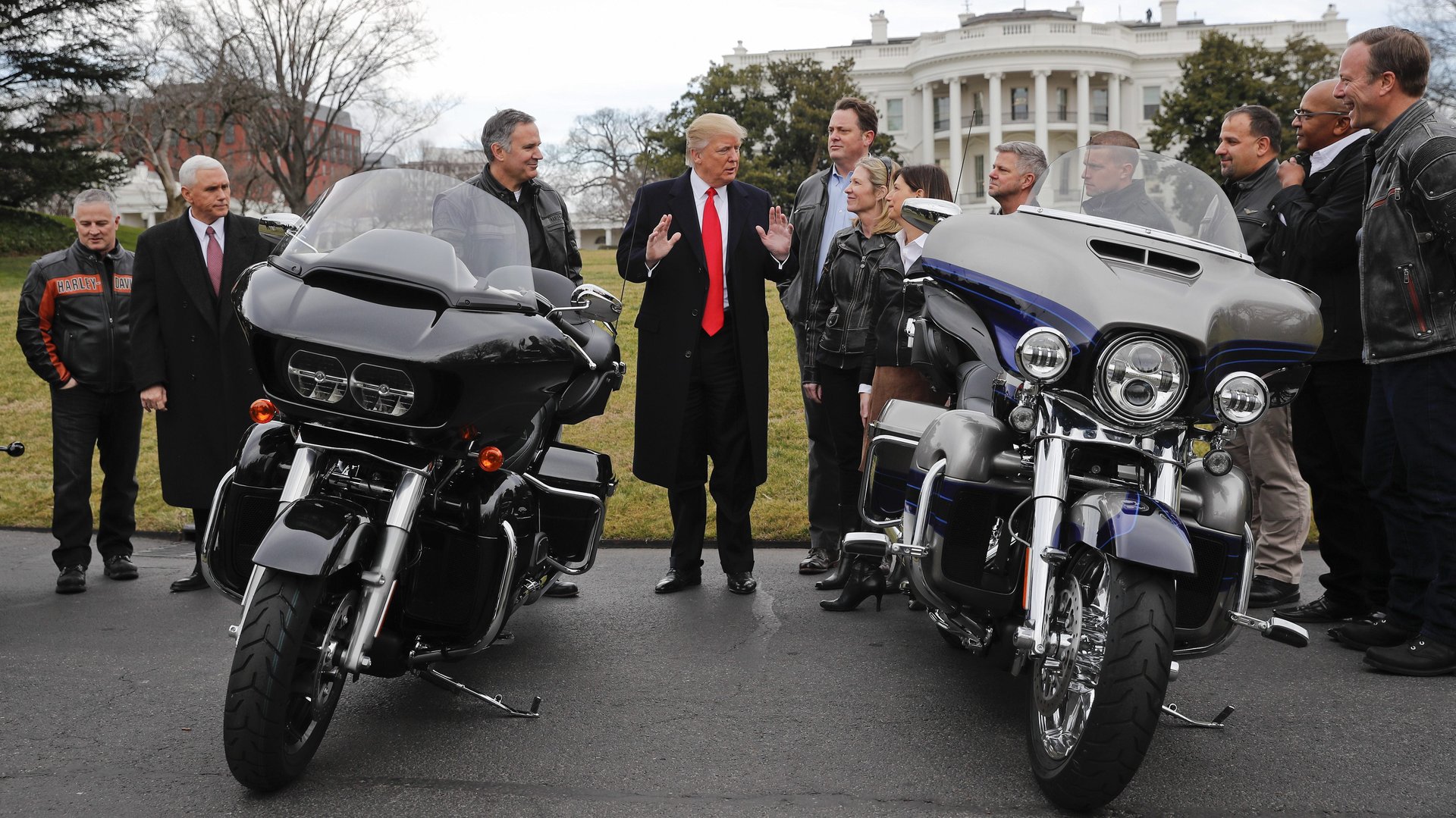A 100% tariff on a Harley? True.
During his speech to a joint session of the US Congress, American president Donald Trump complained that the Harley-Davidson motorcycle company faces a 100% tariff in in at least one country. Fact check: True.


During his speech to a joint session of the US Congress, American president Donald Trump complained that the Harley-Davidson motorcycle company faces a 100% tariff in in at least one country. Fact check: True.
The tariff, applied by India on motorcycles with engines larger than 800cc, is a full 100%, according to the International Trade Centre. Other notable countries with high tariffs on large motorcycles are Thailand, China, and Malaysia.
Trump said that Harley-Davidson executives have told him “it’s very hard to do business with other countries because they tax our goods.”
But then, the US can be just as brutal with its own tariffs on imported goods.
Sour cream with more than 6% butterfat costs 87.6¢ per kilo at the border if the country it’s from doesn’t qualify for special treatment. That amounted to a 114% global tariff in 2015, according to US Census Bureau figures. The levy on condensed milk is 49.6¢ per kilo, which worked out to a 103% tariff in 2015.
Notably, the US’s tariff on large motorcycles from India is 0% and can range up to 10% for other countries. (Meanwhile, if you’re importing Indian flue-cured tobacco that has been threshed but won’t be used in cigarettes, the US will charge you 37.5¢ per kilo at the border. That amounted to a 77.9% tariff in 2015.)
The $1 million or so in tariffs that India would have collected in tariffs on the $1 million or so in large motorcycles that the US’s thriving motorbike industry exported to India in 2015 is roughly in line with the tariffs the US collected on many goods that year from India’s thriving mercantile industry. For example, India exported $4.4 million of women’s shorts made of synthetic fibers to the US in 2015 and faced an average tariff of 24%, netting the US government about $1 million.
In total, Census figures show, the US collected $1.1 billion in tariffs on $46 billion of goods imported from India in 2015, for an average rate of 2.4%. India collected $2.1 billion of tariff on $21.5 billion of imported US goods, an average of 9.64% according to the International Trade Centre.
In any case, motorcycles aren’t the best case study for trade policy. When it comes to transport, tariffs are only one part of the regulatory scheme that can act as barriers to foreign markets. Safety, fuel efficiency, and pollution standards differ from country to country and are often times not in alignment. For instance, many cars manufactured in India are sold without airbags, making them prohibited from import into the US, which requires airbags in all new cars. No level of tariffs will change that.